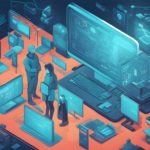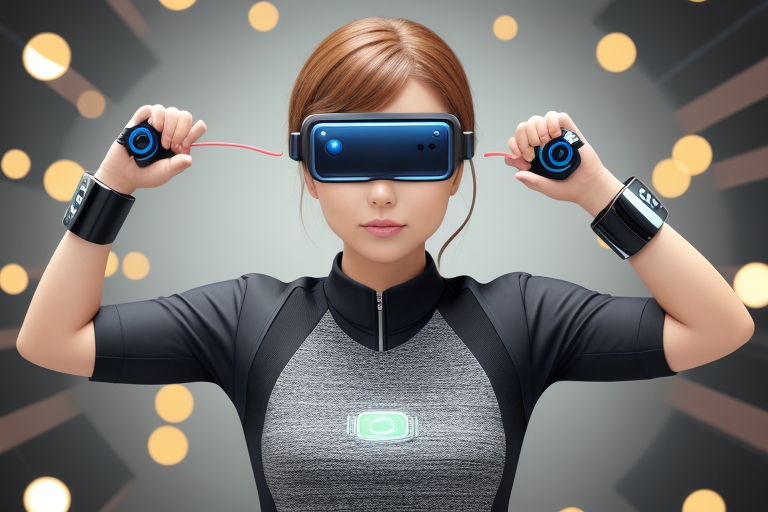At the cutting edge of cognitive technology lies a transformative innovation known as brain-computer interfaces (BCI). Also called neural interfaces or brain-machine interfaces, this emerging neurotechnology enables direct communication between the human brain and external devices through implanted or wearable brain activity sensors. While BCIs conjure science fiction visions of telepathy and telekinesis, these neural interfaces in fact harbor enormous potential for empowering human creativity. By decoding imagination and cognitive processes, BCI technology could unlock revolutionary new avenues for artistic expression, streamline creative workflows, and expand creative access. This article delves into the current state of BCI research and creation tools, promising directions for enhancing creativity, and key challenges facing mainstream adoption. Understanding both the exhilarating possibilities and sobering obstacles will help guide the development of safe, ethical BCIs that enrich rather than replace human creativity.
Decoding Creativity – How Brain-Computer Interface Works to Map Cognition
The key premise behind BCIs is leveraging machine learning algorithms to translate sensed neural activity into actionable data. Implanted brain sensors like Neural ink’s threads or external electroencephalogram (EEG) caps detect electrical signals firing between neurons as we process sensory input and perform cognitive tasks. Sophisticated AI then analyzes these complex neural patterns to decipher mental processes and intents in real time. With enough data from EEG readings or implanted sensors, machine learning models can effectively decode thoughts, emotions, movements and even imagery.
For creative applications, this brain decoding unlocks revolutionary possibilities. Artists and designers can create directly from imagination by visualizing graphic elements, shapes and brush strokes that get translated into digital art in real time. Musical composers could improvise entire synthesized compositions just by thinking of melodies and rhythms. Writers may draft stories by silently narrating sentences that automatically generate. Brain-Computer Interfaces could even detect felt emotions to automatically render visual art or music that captures a mood. Hands-free creation by thinking alone offers unparalleled artistic freedom.
BCIs also promise to streamline creative workflows by automating routine tasks. Neural signals could trigger functions in creative programs or replace manual inputs like keyboards, mice and tablets. Editing projects in Adobe Creative Cloud suite through thought alone would enable huge efficiency gains in graphic design, photography, animation and industrial design work. BCIs may even help creatives enter immersive flow states of heightened focus and creativity by detecting and enhancing specific neural patterns. Performance art, live music and dance could also be revolutionized by synthesizing choreography and music through brain sensing.
Challenges Facing Mainstream Brain-Computer Interface Adoption
However, substantial obstacles remain before Brain-Computer Interfaces fulfill this astounding creative potential. Available consumer headsets like the Muse or Neurosky Mindware headbands provide only limited EEG sensing of broad emotional states, not the intricate decoding needed for nuanced control. Implanted sensors like Neural ink scales more processing power, but face risks from surgical procedures. Challenges like biocompatibility of long-term implants persist.
Machine learning algorithms have not achieved the level of sophisticated pattern recognition on par with the complexity and subjectivity of human thought. Physical motor movements are far easier for AI to interpret than cognitive abstractions like imagining ideas or emotions. And ethical dilemmas orbit invasive access to private thoughts – users may not wish to entrust tech companies with their unfiltered brain data. But perhaps the greatest challenge is establishing reliable frameworks for decoding the neural roots of creativity itself.
While neuroscience has mapped general brain regions linked to creative cognition, the interplay between conscious thought, emotions, memories and environment is endlessly complex. Creativity emerges through nonlinear connections lighting up all corners of the brain – translating these imagined ideas into digital art remains an enormous technical hurdle. And many argue that imposing AI frameworks to codify imagination undermines the intrinsic value of human creativity. Ethical Brain-Computer Interface design should focus on augmentation, not automation, of creative thinking.
Progress in Brain-Computer Interfaces for Health, Communication and Accessibility
While BCIs for creativity represent an ambitious long-term vision, neural interface technology has already made profound impacts on restoring health, communication and accessibility. Implanted BCIs have enabled paralyzed patients to control computer cursors, robotic limbs, wheelchairs and even communicate through typing with thought alone. Noninvasive EEG headsets allow users to mentally operate apps, games and assistive robots. BCIs show immense promise for treating neurological conditions from epilepsy to depression through closed-loop neuromodulation.
For all users, wearable EEG headsets like the Emotiv Insight facilitate silent mind-to-mind communication of emotions and reactions through real-time brain data decoding. VR and AR interfaces increasingly incorporate BCI sensors to track focus and customize experiences to user’s cognitive state. Neural data also provides biometrics for authenticating access and verifying identity across accounts and devices. Through enhancing cognitive control and providing adaptive feedback, BCI technology can optimize human-computer symbiosis across many domains.
Ultimately, accessibly designed BCI tools promise to expand creative opportunities for people with disabilities and mobility limitations by unlinking creation from physical inputs. Drawing, writing music or coding through imagined thought alone offers independence and empowerment. Democratizing participation in arts and music culture through neurotechnology supports inclusion and accessibility. Progress in medical BCIs continues building foundations for transformative consumer applications.
The Future of Brain-Computer Interface – Tech Ethics, Advancement and Adoption
As BCI research persists on intersecting fronts, this technology appears poised for eventual widespread adoption. Exciting medical breakthroughs generate investor enthusiasm for commercial development. VR, AR and smart home devices increasingly incorporate passive brain sensing for intuitive commands and responses tailored to moods. Machine learning decoding of neural signals continues advancing aided by growth of big brain data sets. In the coming decades, Brain-Computer Interfaces may progress from clinical settings to ubiquitous wearable devices and eventually routine brain augmentation procedures.
However, developers face major challenges in responsibly guiding this monumental transition. Ethical dilemmas around data privacy, transparency, bias in algorithms and regulation of embedded medical devices will intensify with more adoption. Constructive public dialogue around appropriate BCI applications should drive policy ahead of technological capability. Most importantly, designers must carefully consider impacts on human autonomy, empowerment and equality to shape neurotechnology that uplifts society.
Combating misuse will also determine public perceptions and trust. Powerful Brain-Computer Interface surveillance capabilities raise concerns around coercion, exploitation and social control without oversight. Military research directions warrant transparency around dual-use potentials. Promoting open access to neuroscience knowledge and collaboration between commercial, academic and public sector researchers will safeguard progress. Moving forward, integrating diverse voices, values and priorities through co-design frameworks will steer Brain-Computer Interfaces towards equitable advancement.
There also remain open questions around how fully integrating Brain-Computer Interfaces may impact individual and collective experience. As assistive devices supercharge recall, focus and efficiency, could over-reliance on implants erode organic cognitive skills? What is gained and lost from seamless human-AI thought symbiosis? On the creative front, avoiding Brain-Computer Interface designed for automation over augmentation will maintain protection of imagination and originality. Our brains and technology shape one other – by designing Brain-Computer Interfaces that empower creativity’s complexity, not just efficiency, we can flourish together.
Conclusion
The road ahead promises an exciting, albeit precarious, journey towards increasingly integrated brain-computer collaboration. Guided by wisdom, empathy and clarity of purpose, Brain-Computer Interface technology harbors hope for revolutionizing accessibility, communication, cognitive health and even human creativity. But we must approach development of these neural interfaces, and indeed all emerging technology, first and foremost as progress for society – not merely consumers. By elevating diverse voices, proactively addressing ethical dilemmas, and designing future Brain-Computer Interfaces as tools to uplift autonomy and understanding, we can write a new story of responsible advancement. The brain and computer offer complementary strengths – together, guided by a moral compass, we can unlock our greatest creative potential.















